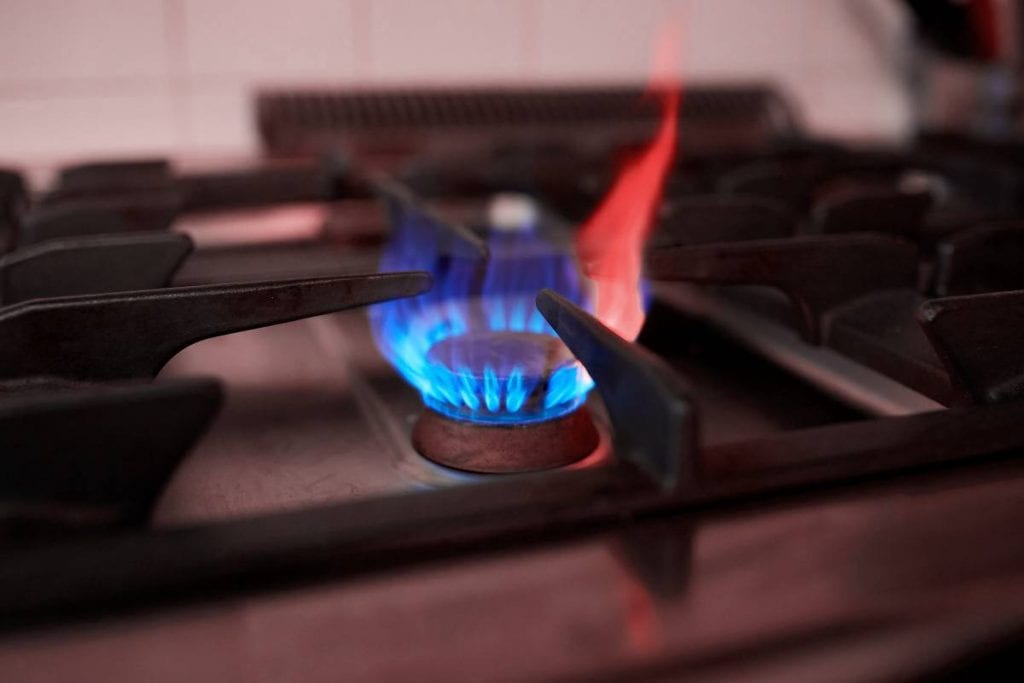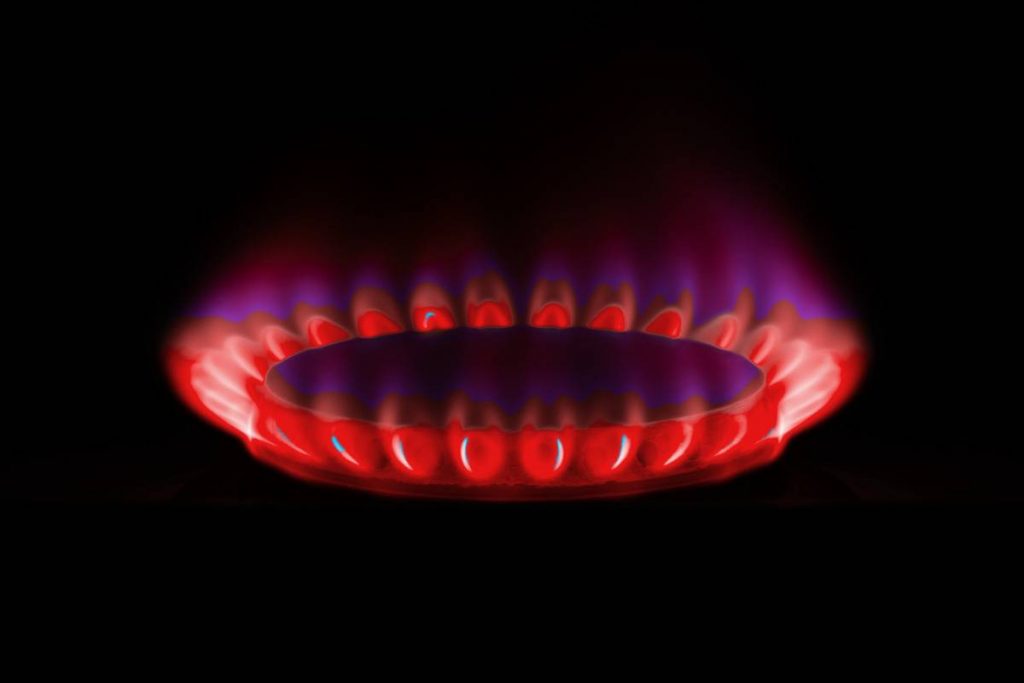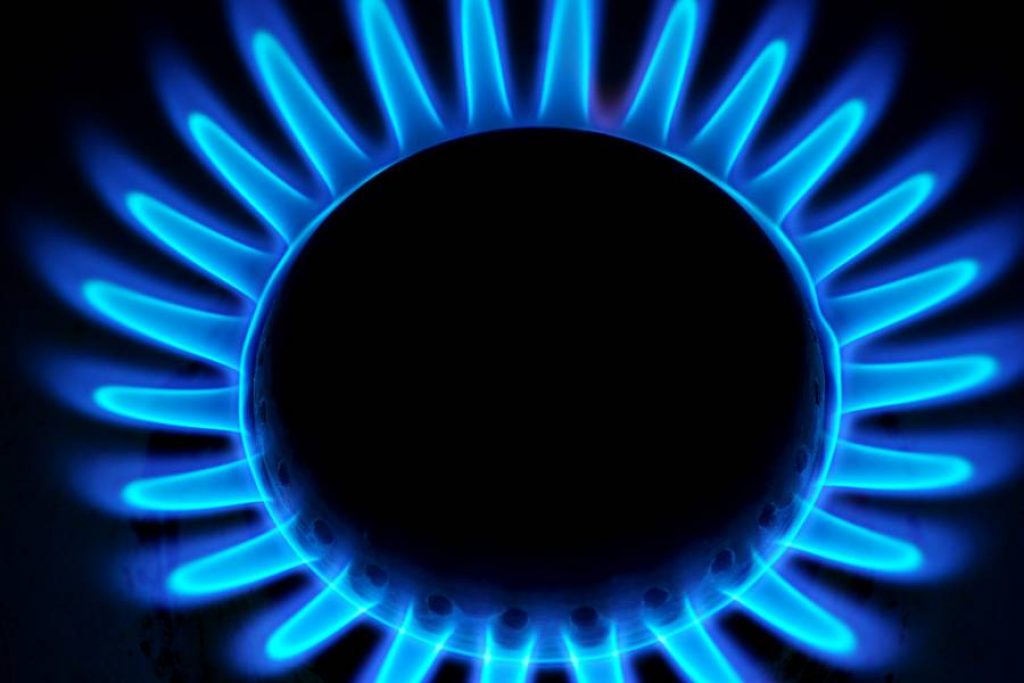If you have used a gas stove before or seen one in use, you must be aware that the flame color is usually blue. Hence, seeing the flame color on your gas stove turn red can be quite alarming.
A change in the flame color to red is indeed a bad sign and indicates a problem with your gas stove. Especially if the flame turns red, you should stop using the gas stove immediately and get it fixed. Continued usage of the gas stove despite having a red flame can be dangerous.
Working in various restaurants as a professional chef, I learned to watch out for warning signs as a part of safety training. Today I’ll be sharing my knowledge on this subject to give you a detailed understanding of why the flame on your gas stove may have turned red.

What Does Red Flame On Gas Stoves Indicate?
A red flame on a gas stove indicates a severely imbalanced air-fuel mixture with a dangerously low proportion of air. Even more importantly, it’s an indicator of high carbon monoxide (CO) emissions from the gas stove.
This is why I mentioned it’s dangerous to keep cooking on a gas stove with red flames. Carbon monoxide is a very poisonous gas, and a high concentration of it can even prove to be fatal.
In this regard, the red flame is the only indicator of high carbon monoxide emissions besides the use of additional instruments like CO detectors. The gas is colorless and odorless, which makes it hard to detect.
If you notice a red flame on your gas stove, don’t wait for any other signs to confirm if it’s really releasing high amounts of carbon monoxide.
What Causes A Red Flame?
Now, you might wonder what results in a gas stove’s red flame. Let us first get an understanding of how the gas stove is normally supposed to work. When a gas stove is in perfect condition, the flames are blue all the way to the tips.
It may still release carbon monoxide, but the amount would be negligible and within the safe limit. This changes when there’s an imbalance in the air-to-fuel ratio.
Remember the science experiments at school where a fire could be put out by placing an inverted glass over it? For a fire to burn, there has to be an oxidizing agent. This oxidizing agent is usually the oxygen from the air around us.
The same applies to a gas stove too. While the gas stove receives fuel supply through the gas pipe, the fuel cannot burn without oxygen.
To remedy this, a gas stove has mixing tubes that draw in air from the surroundings and mix it with the fuel. This mixture then reaches the burner and takes part in the combustion process.
Just because the fuel is burning, it doesn’t necessarily mean that complete combustion is taking place. Complete combustion requires a certain air-to-fuel ratio, as the lack of oxygen would hinder the combustion process.
When LPG or PNG gasses are mixed with enough oxygen and burn efficiently, there’s barely any carbon monoxide emission. However, the chemical reaction changes in the absence of adequate oxygen, resulting in the formation of carbon monoxide molecules.
So, is it the carbon monoxide that turns the flame red?
Not exactly.
As I explained, the combustion process is incomplete without adequate oxygen. This significantly reduces the amount of heat generated from the flame, making it red. The complete combustion of cooking gases results in flames that burn at almost 2000°C. Such high energy levels ionize the gas molecules and turn the flame blue.
However, the same can’t be said about incomplete combustion. The energy generated is much lower; too low to make the flame blue. This is why the flame turns red when there isn’t enough air in the mixture.
In short, the chemical reaction of the combustion process changes in the absence of enough oxygen molecules, resulting in high CO emissions and less heat.
Usually, before turning to red, the flames slowly turn yellow from blue, then orange and finally red. While a slight yellow flame is still manageable, you should repair the gas stove immediately if it turns orange or red.

Should You Use A Gas Stove With A Red Flame?
It is too dangerous to use a gas stove with a red flame. Even small concentrations of carbon monoxide (0.01-0.2%) can have severe effects on the human body.
When you keep cooking on a gas stove with unusually high carbon monoxide emissions, it starts to poison the air around you. The longer you breathe in the toxic gas, the more you are at risk.
Besides the risk of carbon monoxide poisoning, cooking on a gas stove with red flame is inefficient in terms of fuel consumption too. As mentioned earlier, the combustion process generates less heat when the oxygen is inadequate.
While the temperature of a blue flame is around 2000°C, a red flame burns at only 600°C to 1000°C. Therefore, it will take longer to cook the same amount of food, and therefore spend more fuel. Check the gas stove flame temperatures to get a better understanding.

How To Reduce Red Flame On Gas Stoves?
As inadequate air supply is the reason behind the red flame, it’s easy to guess that you can fix the issue by getting the air-to-fuel ratio back to normal. Here are a few tips on how you can turn the flame color back to blue:
1. Clean The Gas Stove
Dirt and grime could block the supply of air in the mixing tubes. Clean up the air vents and pipes that carry air to the mixing tubes. You may have to dismantle the gas stove to reach and clean these areas properly. Regularly cleaning your gas stove will prevent such problems from cropping up in the first place.
2. Readjust The Air Shutter
There’s an air shutter next to the burner gas valve that controls the amount of air entering the system. It looks like a sliding plate or tube covering the air vent. To access this air shutter, you need to remove the vents and expose the burners. Now adjust the air shutter to open the vent wider until the flame turns blue.
As requested by a follower, I am delighted to share a video about how to adjust this air shutter-
3. Professional Servicing
If the above-mentioned methods don’t work or you find them too risky, you can get the gas stove professionally serviced instead. Preferably, send it to an authorized service center of the manufacturer to get the gas stove fixed.
Finding a red flame on your gas stove is never a good sign. Don’t risk cooking any longer and arrange to repair it with the help of a professional technician.
I hope my efforts have paid off and I’ve been able to answer all your queries through this article. Knowing precisely what a gas stove flame turns red and what it means should help you take precautions.


Very good information, scary facts for sure. My mom just had a new stove delivered, paid a plumber to do the install, and when it was used a couple days later, towering red flames.
Ohh! I am very sorry to know that. I hope that my guide helped you to sort out the problems of red flame. Let me know if I can help you any further.
I don’t see any kind of air shutter next to the valve. I hope it’s the same as those circular vents in the mixing tube… It would have been better if a small video were posted. And, thanks for the warning about CO.
Hello Sridhar, I am glad to help you. There must be an air shutter to regulate the flow of oxygen for combustion. As you requested, here is a video for the same: YouTube. I have also updated the blog post with it. Let me know if you have any other queries. Thank you.